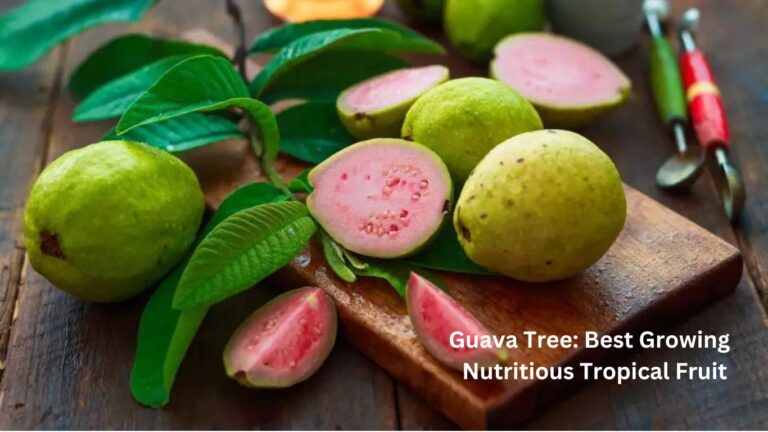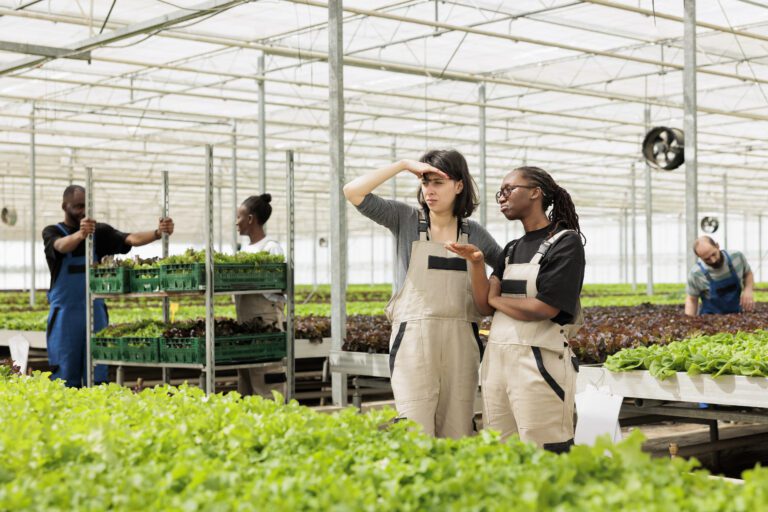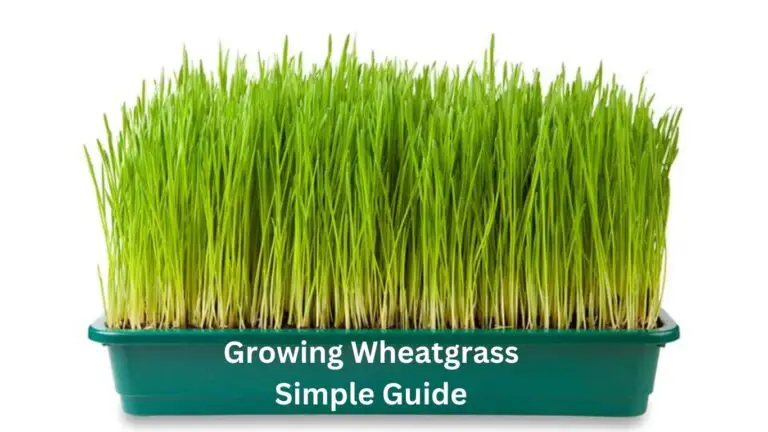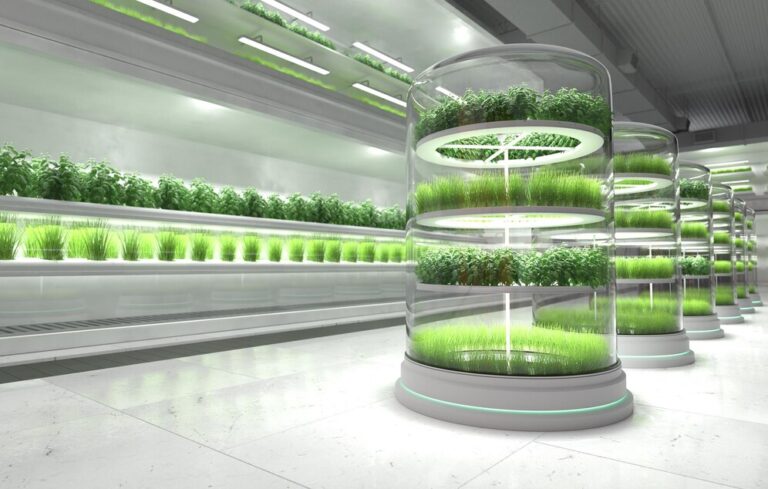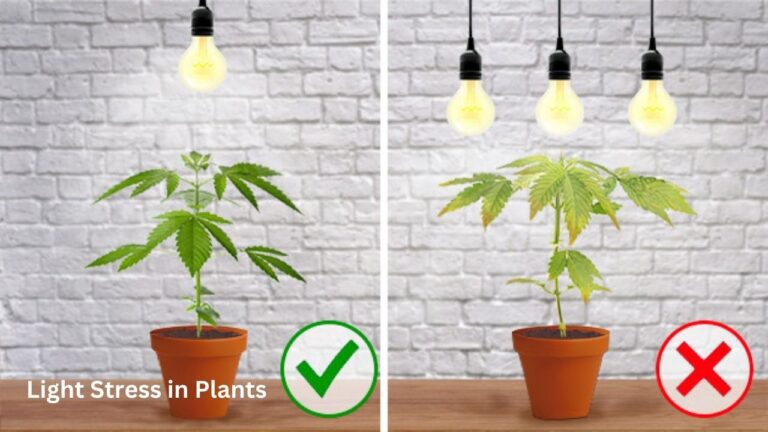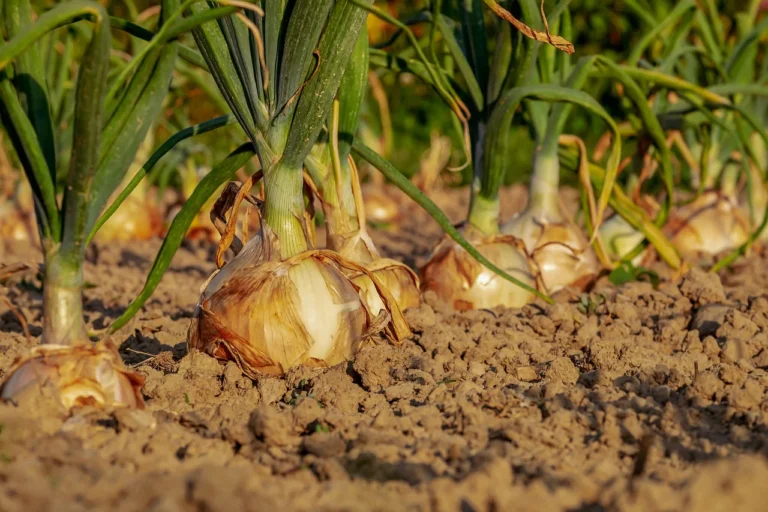Super Cropping: How to Use This Technique to Boost Your Yield and Quality of Your Buds
Table of Contents
Understanding the Benefits of Super Cropping for Your Cannabis Plants
Super cropping is a technique that has been gaining popularity among cannabis growers for its numerous benefits. By intentionally causing minor stress to the plants through selective bending and manipulation of the stems, super cropping can help gardeners achieve better yields, increased bud density, and improved overall plant health.
One of the key benefits of super cropping is the promotion of lateral growth. By gently bending the stems at strategic points, gardeners can encourage the plant to produce multiple side branches. This results in a bushier plant with more bud sites, ultimately allowing for a higher yield at harvest time. Additionally, super cropping can help ensure that these side branches receive adequate light and airflow, leading to improved nutrient uptake and reduced risk of pest or disease issues.
Furthermore, super cropping can also increase the potency of your cannabis plants. When the stems are bent and manipulated, it stimulates the production of secondary metabolites, including cannabinoids and terpenes. These compounds are responsible for the unique flavors, aromas, and effects of different cannabis strains. By super cropping, you are essentially signaling to the plant to produce more of these desirable compounds, resulting in a more potent and flavorful harvest.

Identifying the Ideal Stage of Growth for Super Cropping
Super cropping, also known as high stress training, is a technique that involves intentionally damaging the plant’s stem in order to encourage lateral growth and increase the overall yield and quality of your cannabis plants. However, it is crucial to identify the ideal stage of growth for super cropping to ensure the best results.
The ideal stage for super cropping is during the early vegetative phase, after the plant has developed a few nodes and has a sturdy stem. This is typically around 3 to 4 weeks after germination. At this stage, the plants are still flexible enough to withstand the stress of bending and manipulation without causing permanent damage. Additionally, super cropping during the vegetative phase allows more time for the plants to recover and redirect their energy towards lateral growth, resulting in a bushier and more productive plant.
It is important to note that attempting super cropping during the flowering stage can be detrimental to the plants as they are less resilient and more prone to irreversible damage. Therefore, it is recommended to avoid super cropping once the plants have entered the flowering stage to prevent stunted growth and reduced yield. By identifying the ideal stage for super cropping, you can maximize the potential of your cannabis plants and achieve a more bountiful harvest.
Selecting the Right Tools and Equipment for Super Cropping
When it comes to super cropping your cannabis plants, selecting the right tools and equipment is essential for a successful process. While this technique may seem straightforward, using the correct tools can make a significant difference in achieving desired results. One crucial tool for super cropping is a pair of sharp pruning shears. These shears will allow you to make clean, precise cuts on the plant stems, ensuring minimal damage and promoting faster healing. Additionally, investing in a set of soft plant ties or twist ties will enable you to secure the bent stems in place without causing harm. These ties should be gentle and flexible, reducing the risk of cutting into the plant tissue and hindering its growth. Ensuring you have the proper tools on hand before attempting super cropping will help you execute the technique effectively and with minimal strain on your plants.
In addition to pruning shears and plant ties, having a reliable pair of gardening gloves is highly recommended for super cropping. These gloves will not only protect your hands from potential cuts or thorns but also provide a barrier between your skin and any harmful substances that may be present on the plants. Additionally, wearing gloves during the process can prevent the transfer of oils from your skin to the plant, which can be detrimental to its health. Look for gloves that are durable, flexible, and fit your hands comfortably, enabling you to have full control and precision while performing the technique. By equipping yourself with a quality pair of gardening gloves, you can ensure both your safety and the well-being of your cannabis plants during the super cropping process.

Step-by-Step Guide on How to Prepare Your Plants for Super Cropping
To prepare your plants for super cropping, there are a few essential steps to follow. First, ensure that your plants are in the vegetative stage of growth, as this is the ideal time to perform the technique. By doing so, you will avoid causing excessive stress to the plants and optimize the chances of successful results.
Next, gather the necessary tools and equipment for the process. It is crucial to have clean and sharp scissors or pruning shears to make precise cuts on the plant stems. Additionally, have some plant ties or soft string on hand to secure the bent branches in place. These items will enable you to manipulate the stems effectively and minimize damage to the plant.
Before proceeding with super cropping, make sure to thoroughly water your plants. This will ensure that they are well-hydrated and more resilient to stress. However, avoid overwatering, as excessive moisture can be detrimental to the plant’s health. By properly preparing your plants for super cropping, you set the stage for successful manipulation and encourage optimum growth.
• Ensure that your plants are in the vegetative stage of growth
• Gather clean and sharp scissors or pruning shears
• Have plant ties or soft string on hand
• Thoroughly water your plants before proceeding with super cropping
Techniques for Properly Bending and Manipulating Your Plant Stems
Properly bending and manipulating your plant stems is a crucial technique in super cropping that can yield impressive results. When done correctly, it encourages lateral growth, strengthens the stems, and enhances light penetration. Here, we will explore two effective techniques for bending and manipulating your plant stems.
The first technique is known as the “pinch and bend” method. To execute this technique, locate the main stem that you want to manipulate and gently pinch it between your thumb and index finger. Gradually apply pressure, bending the stem at a 45-degree angle. Be careful not to apply too much force, as it may cause the stem to snap. Additionally, ensure that you are bending the stem at a supple and pliable stage of growth, usually during the vegetative phase.
Another technique that gardeners often utilize is the “tie-down” method. This involves gently tying the stem down horizontally to encourage growth in a specific direction. To execute this method, attach a soft plant tie or string to the stem you wish to manipulate and secure it to a nearby support, such as a stake or trellis. As the plant continues to grow, it will redirect its energy towards lateral growth, resulting in a bushier and more productive plant.
Remember, it is crucial to exercise caution and be gentle when bending or manipulating plant stems. Rushing or applying excessive force can cause irreversible damage to the plant. By using these techniques, you can effectively guide the growth of your cannabis plants and optimize their overall health and productivity.
Recognizing the Signs of Successful Super Cropping
Recognizing the signs of successful super cropping is essential for cannabis growers looking to optimize their yields and maximize plant health. One of the first indicators of a successful super cropping technique is the ability of the plant to recover quickly and resume vigorous growth. After implementing the bending and manipulating techniques, keep a close eye on the plant to monitor its response. Within a few days, you should observe new growth sprouting from the nodes below the bent stem, signaling that the plant is healing and redirecting its energy towards developing new branches.
Furthermore, another sign of successful super cropping is an increased number of bud sites. The stress induced by bending and manipulating the plant stems triggers the production of auxins, a group of hormones responsible for promoting cell elongation. As a result, the plant will channel its resources towards producing more bud sites along the newly stimulated branches. By recognizing this increase in bud sites, growers can anticipate a higher yield potential and a more bountiful harvest.

Closely monitoring the plant’s recovery and observing the emergence of additional bud sites are crucial for identifying signs of successful super cropping. These indicators not only confirm that the technique has been properly executed but also serve as promising signals for a successful and rewarding cannabis grow.
Tips for Avoiding Common Mistakes in Super Cropping
When it comes to super cropping, avoiding common mistakes can greatly optimize your results and ensure the health and productivity of your cannabis plants. One common mistake to avoid is applying too much pressure when bending the stems. Although it may be tempting to exert force, excessive pressure can lead to breakage or damage to the plant’s vascular system. To prevent this, gently apply pressure using your fingertips and gradually increase the bend over time.
Another mistake often made during super cropping is not giving the plant enough time to recover between bends. This can cause stress and hinder growth. It is crucial to allow sufficient recovery time, which typically ranges from a few days to a week, depending on the plant’s resilience and overall health. By monitoring the plant’s response and observing signs of recovery, such as the emergence of new growth, you can gauge when it is appropriate to perform additional bends.
Remember, successful super cropping relies on patience and precision. Take the time to study your plants closely, understanding their optimal growth stages and providing the necessary care. By avoiding these common mistakes, you can maximize the benefits of super cropping and achieve a bountiful cannabis harvest.
Maximizing Yield and Quality Through Strategic Super Cropping
Strategic super cropping is a technique that can significantly enhance the yield and quality of your cannabis plants. By carefully bending and manipulating the stems, you can promote the development of multiple bud sites while also improving light penetration and air circulation. This allows for better nutrient distribution and prevents the formation of dense, compact buds that are vulnerable to mold and mildew.
One of the key benefits of strategic super cropping is its ability to drastically increase overall yields. By carefully manipulating the shape and structure of your plants, you can encourage the growth of more colas and buds. This can lead to a higher quantity of usable product at harvest time. Additionally, the improved distribution of light and nutrients throughout the plant can result in bigger, denser buds that are packed with cannabinoids and terpenes. The end result is a higher quality product with enhanced potency and aroma.
Overall, strategic super cropping offers cannabis growers the opportunity to maximize both their yield and the quality of their plants. By understanding the techniques involved and implementing them properly, you can enjoy larger harvests and more potent buds. Experimenting and fine-tuning your super cropping methods based on your specific strain and growing conditions will allow you to optimize your results. With patience, practice, and a commitment to the health and well-being of your plants, you can take your cannabis cultivation to new heights. So, let’s dive into the techniques and strategies for successful super cropping.
How Super Cropping Can Improve Air Circulation and Light Penetration
Super cropping is an effective technique that can greatly improve air circulation and light penetration in your cannabis garden. By strategically bending and manipulating your plant stems, you create a more open and evenly distributed canopy, allowing for better airflow and light distribution throughout your garden.
When plants are densely packed or have excessive foliage, air circulation becomes restricted, creating an environment that is prone to humidity and stagnant air. This can lead to the development of mold, mildew, and other harmful pathogens that can damage your plants. By super cropping, you create a more open structure, allowing for better air movement and reducing the risk of these issues.
| Aspect | Impact of Super Cropping |
|---|---|
| Air Circulation | Enhances air circulation by opening up the canopy, reducing humidity pockets, and preventing stagnant air. This helps in minimizing the risk of mold and mildew. |
| Light Penetration | Increases light penetration by creating an even canopy. This ensures that light reaches lower parts of the plant, promoting more uniform growth and maximizing the use of available light resources. |
| Canopy Management | Facilitates better canopy management, allowing for improved light distribution throughout the entire plant. Super cropping helps maintain an even canopy height, preventing overshadowing of lower branches. |
| Stress-induced Responses | Triggers stress responses in the plant, leading to the development of stronger branches. This can result in more robust and resilient plants that are better able to support the weight of buds during flowering. |
| Yield Improvement | Can contribute to increased yields by optimizing light exposure and promoting healthier overall plant development. Improved air circulation also reduces the likelihood of pest and disease issues. |
In addition to improving air circulation, super cropping also enhances light penetration. When plants have dense foliage, lower branches and leaves can block light from reaching the lower parts of the canopy. By bending and manipulating the stems, you can create a more uniform spread of light, ensuring that all parts of your plants receive adequate illumination. This encourages healthy growth and development, as light is essential for photosynthesis and the production of energy for plants.
Integrating Super Cropping with Other Plant Training Methods
Super cropping is a highly effective plant training method that can be integrated with other techniques to optimize the growth and development of cannabis plants. By combining super cropping with other training methods, such as topping, pruning, and low stress training (LST), cultivators can achieve even greater control and manipulation of their plants.
When combined with topping, super cropping helps to create a well-balanced canopy by encouraging lateral growth. Topping involves cutting off the main stem’s apical meristem, stimulating the growth of multiple colas. By super cropping the lower branches after topping, growers can ensure that these secondary colas receive sufficient light and nutrients to produce high-quality buds.
Incorporating super cropping with pruning allows for precise control over the shape and structure of the cannabis plant. Pruning involves selectively removing certain branches or leaves to redirect the plant’s energy to desired areas. By using super cropping in conjunction with pruning, growers can further optimize light penetration and air circulation, resulting in healthier plants and increased yields.
The combination of super cropping and low stress training (LST) is particularly effective in maximizing the potential of cannabis plants. LST involves gently bending and tying down the branches to create an even canopy and promote horizontal growth. By super cropping the branches prior to bending, cultivators can manipulate the plants’ structure, ensuring that each branch receives an adequate amount of light and nutrients.
Integrating super cropping with other plant training methods requires careful planning and execution. It is important to consider the specific needs and characteristics of each cannabis strain, as well as the desired growth patterns and objectives. By utilizing a combination of techniques, cultivators have the opportunity to achieve optimal plant health, maximize yields, and enhance overall quality. So, take the time to experiment with different training methods and find the approach that works best for your specific cannabis plants.
The Importance of Patience and Care in Super Cropping
Super cropping is a technique that requires both patience and care in order to achieve successful results. Patience is essential because it takes time for the plant to recover and respond to the bending and manipulation of its stems. Rushing the process can lead to unnecessary stress and damage to the plant. It is important to give the plant ample time to heal and adjust before moving forward with additional training methods or adjustments.
Care is also crucial in super cropping to ensure the health and vitality of the plant. Proper care includes providing the plant with adequate nutrients, water, and light. Monitoring the plant closely for any signs of distress or nutrient deficiencies is essential. Regularly inspecting the plant for pests, diseases, or any other issues can help prevent potential problems and address them promptly. Additionally, providing support to the bent stems and tying them gently can help prevent breakage and ensure they heal properly.
| Aspect | Importance in Super Cropping |
|---|---|
| Patience | Helps avoid rushing the process, allowing plants to adapt gradually. |
| Careful Manipulation | Ensures minimal stress on the plants, promoting healthier growth. |
| Reduced Risk of Damage | Patience reduces the likelihood of accidental harm during handling. |
| Optimal Recovery | Allows plants to recover and thrive after the super cropping stress. |
| Increased Yields | Patiently executed super cropping often leads to higher yields. |
| Precision in Technique | Careful handling ensures the correct execution of super cropping. |
| Long-Term Plant Health | Patience and care contribute to sustained overall plant well-being. |
By exercising patience and care throughout the super cropping process, you can maximize the potential benefits of this technique and achieve healthy, robust plants. It is important to remember that every plant is unique and may respond differently to super cropping. Paying attention to your plants’ individual needs and adapting your approach accordingly will contribute to a successful outcome. So, take your time, provide proper care, and let your plants flourish with the benefits of super cropping.
Troubleshooting Common Issues during Super Cropping
When it comes to super cropping, there are a few common issues that gardeners may encounter. One such issue is the possibility of accidentally snapping or damaging the plant stems during the bending process. This can happen if too much force is applied or if the stem is not properly softened beforehand. To avoid this problem, it is important to exercise caution and gently manipulate the stems, gradually applying pressure until they bend without breaking. Additionally, make sure to thoroughly prepare the stems by lightly squeezing and rolling them between your fingers to soften them up. This will help prevent any unnecessary damage and ensure successful super cropping.
Another issue gardeners may face is the risk of introducing infections or diseases to the plant through open wounds caused by super cropping. When stems are bent, they can create small openings that pathogens can enter and infect the plant. To minimize this risk, it is crucial to sanitize any tools or equipment used for super cropping to prevent the spread of bacteria or fungi. Clean and disinfect your tools before and after each use using a solution of alcohol or hydrogen peroxide. Additionally, consider applying a protective coating, such as wax or plant sealant, to the wounded areas to create a barrier against potential pathogens. By taking these precautions, you can reduce the chances of infections and promote the overall health of your plants during the super cropping process.
Expert Advice and Pro Tips for Successful Super Cropping
Super cropping is a technique that requires careful precision and attention to detail for optimal results. To ensure successful super cropping, it is important to follow some expert advice and pro tips.
Firstly, it is crucial to choose the right plants for super cropping. Select sturdy and healthy plants with strong stems that can withstand the bending and manipulation involved in the process. Weak or fragile plants may not respond well to super cropping and could end up being damaged.
Secondly, timing is everything. Super cropping should be done during the vegetative stage of growth when the plants are actively growing and have enough flexibility in their stems. Attempting super cropping during flowering can lead to stress and reduced yield. Take note of the development of the plants and choose the ideal stage for super cropping accordingly.
By following these expert tips, you can enhance your success with super cropping and maximize the potential of your cannabis plants. However, there are many more factors to consider. Keep reading to explore additional insights and strategies for super cropping, as well as common mistakes to avoid and troubleshooting techniques for any issues that may arise.
What are the benefits of super cropping for cannabis plants?
Super cropping can promote lateral growth, increase bud production, improve air circulation and light penetration, and enhance overall plant health.
At what stage of growth should I perform super cropping?
It is best to super crop during the vegetative stage when the plant is flexible and can recover more easily from the bending and manipulation.
What tools and equipment do I need for super cropping?
You will need sharp scissors or pruning shears to make clean cuts, soft plant ties or twist ties to secure the bent stems, and gloves to protect your hands.
How do I prepare my plants for super cropping?
To prepare your plants, make sure they are well-watered and hydrated. This will make the stems more pliable and less likely to snap during the bending process.
What techniques should I use to properly bend and manipulate my plant stems?
The main techniques for super cropping include gently bending the stem at a 90-degree angle, squeezing and twisting the stem until it becomes pliable, and using plant ties to secure the bent stem in place.
How can I recognize if super cropping has been successful?
Successful super cropping can be identified by the plants’ ability to recover and continue growing, the development of new lateral branches, and an overall increase in plant vigor.
What are some common mistakes to avoid in super cropping?
Common mistakes include applying too much force and breaking the stem, not providing adequate support for the bent stems, and attempting super cropping during the flowering stage when the plant is less flexible.
How can super cropping maximize yield and quality?
Super cropping can increase bud production by promoting more lateral growth and creating a more even canopy. It also improves light penetration, which enhances the quality of the buds.
How does super cropping improve air circulation and light penetration?
By bending and manipulating the plant stems, super cropping opens up the canopy, allowing for better air movement and light penetration to reach lower branches and buds.
Can super cropping be combined with other plant training methods?
Yes, super cropping can be integrated with techniques such as topping, LST (low-stress training), and scrogging to further enhance plant structure, yield, and overall growth.
How important is patience and care in super cropping?
Patience and care are crucial in super cropping as it requires gentle manipulation and monitoring of the plants. Rushing the process or being too rough can result in damage or reduced effectiveness.
What are some common issues that may arise during super cropping?
Common issues include stem breakage, delayed recovery, infection or disease at the bending sites, and uneven plant growth. Proper techniques and careful observation can help prevent these problems.
Can you provide some expert advice and pro tips for successful super cropping?
Some expert advice and pro tips include starting with healthy and vigorous plants, avoiding super cropping during the flowering stage, providing proper support for bent stems, and monitoring the plants closely for any signs of stress or damage.

Pallavi Gupta is a burgeoning writer at SouthElMonteHydroponics, blending her passion for data analysis with a keen interest in biotechnology. Currently pursuing a Bachelor’s in Biotechnology at Amity University, Pallavi delves into the intricacies of life sciences while gaining hands-on experience in the exciting world of data analysis. Her unique background provides a fresh perspective on hydroponic farming, as she explores the intersection of biotechnology and sustainable agriculture. Through her writing, Pallavi aims to bridge the gap between data-driven insights and innovative farming practices, inspiring others to harness technology for a greener future.

